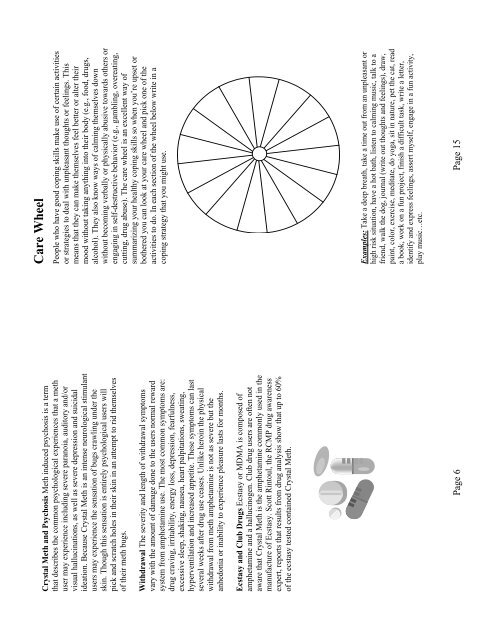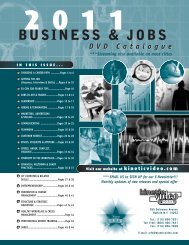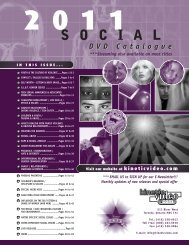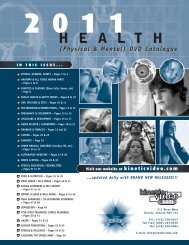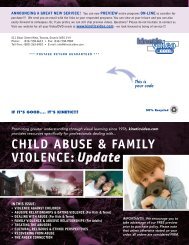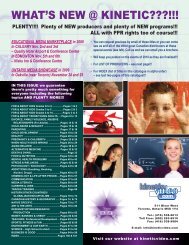DEATH BY JIB Guide - Kinetic Video
DEATH BY JIB Guide - Kinetic Video
DEATH BY JIB Guide - Kinetic Video
Create successful ePaper yourself
Turn your PDF publications into a flip-book with our unique Google optimized e-Paper software.
Crystal Meth and Psychosis Meth induced psychosis is a term<br />
that describes the common psychological experiences that a meth<br />
user may experience including severe paranoia, auditory and/or<br />
visual hallucinations, as well as severe depression and suicidal<br />
ideation. Because Crystal Meth is an intense neurological stimulant<br />
users may experience the sensation of bugs crawling under the<br />
skin. Though this sensation is entirely psychological users will<br />
pick and scratch holes in their skin in an attempt to rid themselves<br />
of their meth bugs.<br />
Withdrawal The severity and length of withdrawal symptoms<br />
vary with the amount of damage done to the users normal reward<br />
system from amphetamine use. The most common symptoms are:<br />
drug craving, irritability, energy loss, depression, fearfulness,<br />
excessive sleep, shaking, nausea, heart palpitations, sweating,<br />
hyperventilation and increased appetite. These symptoms can last<br />
several weeks after drug use ceases. Unlike heroin the physical<br />
withdrawal from meth amphetamine is not as severe but the<br />
anhedonia or inability to experience pleasure lasts for months.<br />
Ecstasy and Club Drugs Ecstasy or MDMA is composed of<br />
amphetamine and a hallucinogen. Club drug users are often not<br />
aware that Crystal Meth is the amphetamine commonly used in the<br />
manufacture of Ecstasy. Scott Rintoul, the RCMP drug awareness<br />
expert, reports that results from drug analysis show that up to 60%<br />
of the ecstasy tested contained Crystal Meth.<br />
Page 6<br />
Care Wheel<br />
People who have good coping skills make use of certain activities<br />
or strategies to deal with unpleasant thoughts or feelings. This<br />
means that they can make themselves feel better or alter their<br />
mood without taking anything into their body (e.g., food, drugs,<br />
alcohol). They also know ways of calming themselves down<br />
without becoming verbally or physically abusive towards others or<br />
engaging in self-destructive behavior (e.g., gambling, overeating,<br />
cutting, drug abuse). The care wheel is an excellent way of<br />
summarizing your healthy coping skills so when you’re upset or<br />
bothered you can look at your care wheel and pick one of the<br />
activities to do. In each section of the wheel below write in a<br />
coping strategy that you might use.<br />
Examples: Take a deep breath, take a time out from an unpleasant or<br />
high risk situation, have a hot bath, listen to calming music, talk to a<br />
friend, walk the dog, journal (write out thoughts and feelings), draw,<br />
paint, color, exercise, meditate, do yoga, sit in nature, pet the cat, read<br />
a book, work on a fun project, finish a difficult task, write a letter,<br />
identify and express feelings, assert myself, engage in a fun activity,<br />
play music…etc.<br />
Page 15


